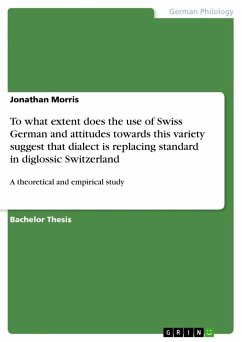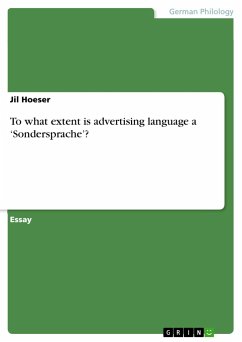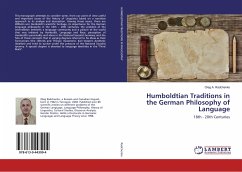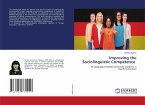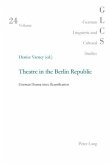Bachelor Thesis from the year 2005 in the subject German Studies - Linguistics, grade: 1 , University of Manchester, language: English, abstract: Ferguson's initial definition of diglossia describes the use of 'two language varieties [that] exist side by side throughout the community, each having a definite role to play' (1959, repr. 1972: 232). The relationship between the Swiss dialects (which will be referred to from hereon as SG) and Swiss Standard German (HG) has been characterized as 'medial diglossia', based on the HG for writing and SG for speaking dichotomy (see EDI 1989b: 101). As Rash comments, 'the term "functional diglossia" is perhaps preferable, as it fits the situation whereby SG and HG are each allocated certain functions (1998: 50). Traditionally, the functions (or domains) of HG have been that of a Schriftsprache, acquired through the education system but also produced orally on formal occasions, in communication with non-SG speakers and in the media. SG has no'soziolektale Wertung' (Linke, Nussbaumer & Portmann 2004: 347) and is therefore employed as an informal spoken variety by all members of the speech community. However, as Ammon states, 'freilich bleibt Fergusons Diglossie-Begriff [...] zu abstrakt, um alle Besonderheiten des Verhältnisses von Dialekten und Standardvarietät in der deutschsprachigen Schweiz [...] zu erfassen' (Ammon 285) and the increased use of SG has led to claims that 'die Mundarten dringen heute in immer mehr Bereiche vor, die früher in erster Linie der Hochsprache vorbehalten waren, und zwar sowohl in schriftlichen wie im mündlichen Ausdruck' (EDI 1989a: VII). In light of this, Ris suggests that 'das gesprochene Hochdeutsch in der Schweiz im internen Gebrauch [fungiert] nicht mehr als komplementäre Sprachform im Sinne des Diglossiemodells [...], sondern als Zweitsprache im Sinne des Bilingualismus-Modells, die man in gewissen Kommunikationssituationen mehr noch verwenden darf als verwenden muss' (1990: 43). The following study has, for the most part, been based on empirical research undertaken between April and August 2004. Its aim is to investigate the extent to which we can ascertain SG is replacing HG in German-speaking Switzerland through an examination of its usage in relation to HG in the education system, written and oral communication and the media. Having done this, I shall look at attitudes towards the changes in SG use, linguistic competency and use of SG in the education system and media, in order to then conclude whether diglossia is still applicable here.
Hinweis: Dieser Artikel kann nur an eine deutsche Lieferadresse ausgeliefert werden.
Hinweis: Dieser Artikel kann nur an eine deutsche Lieferadresse ausgeliefert werden.

